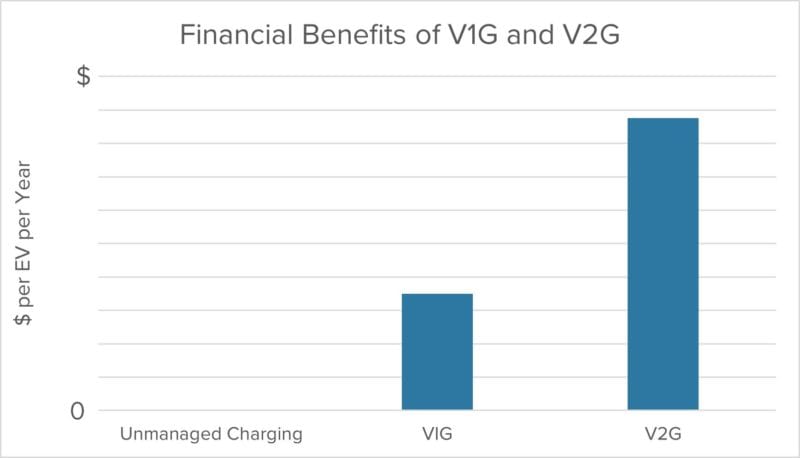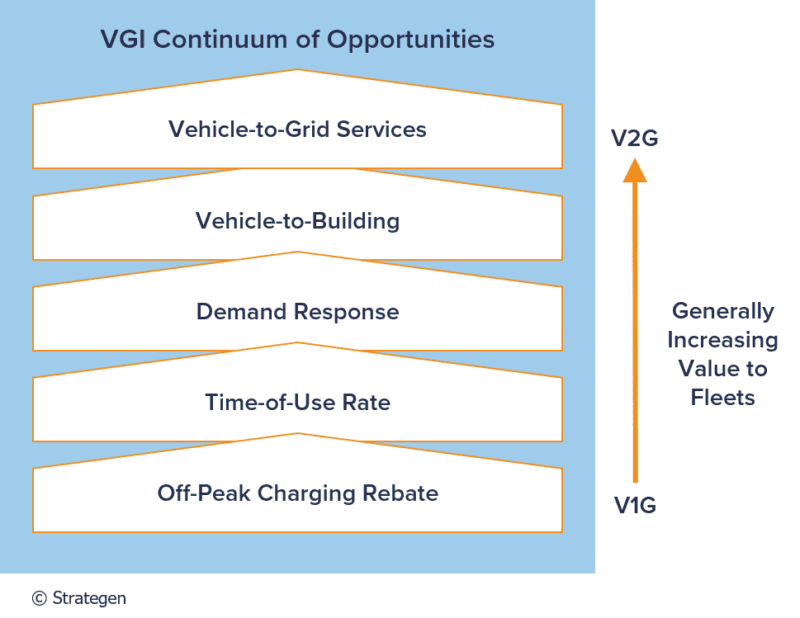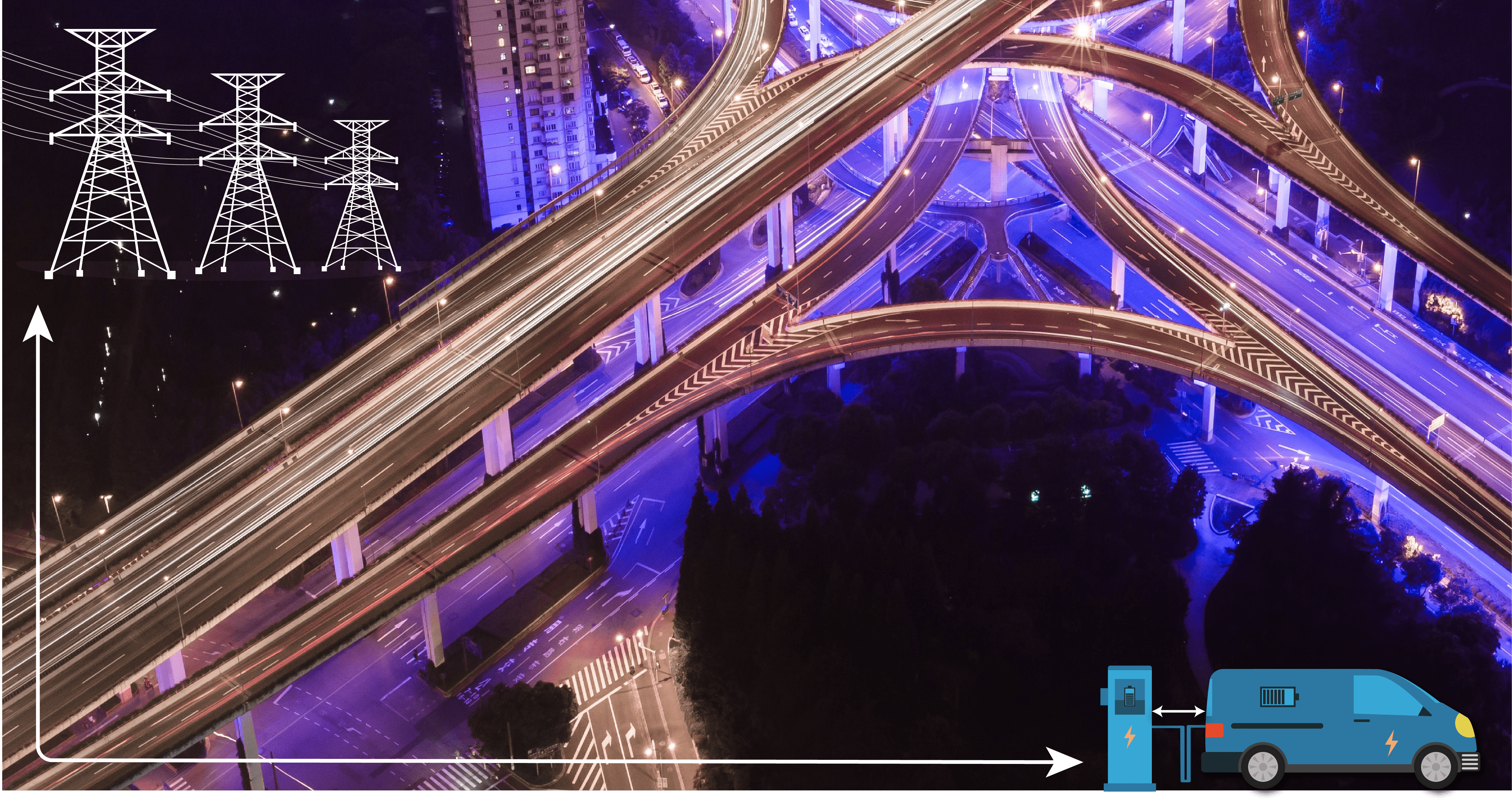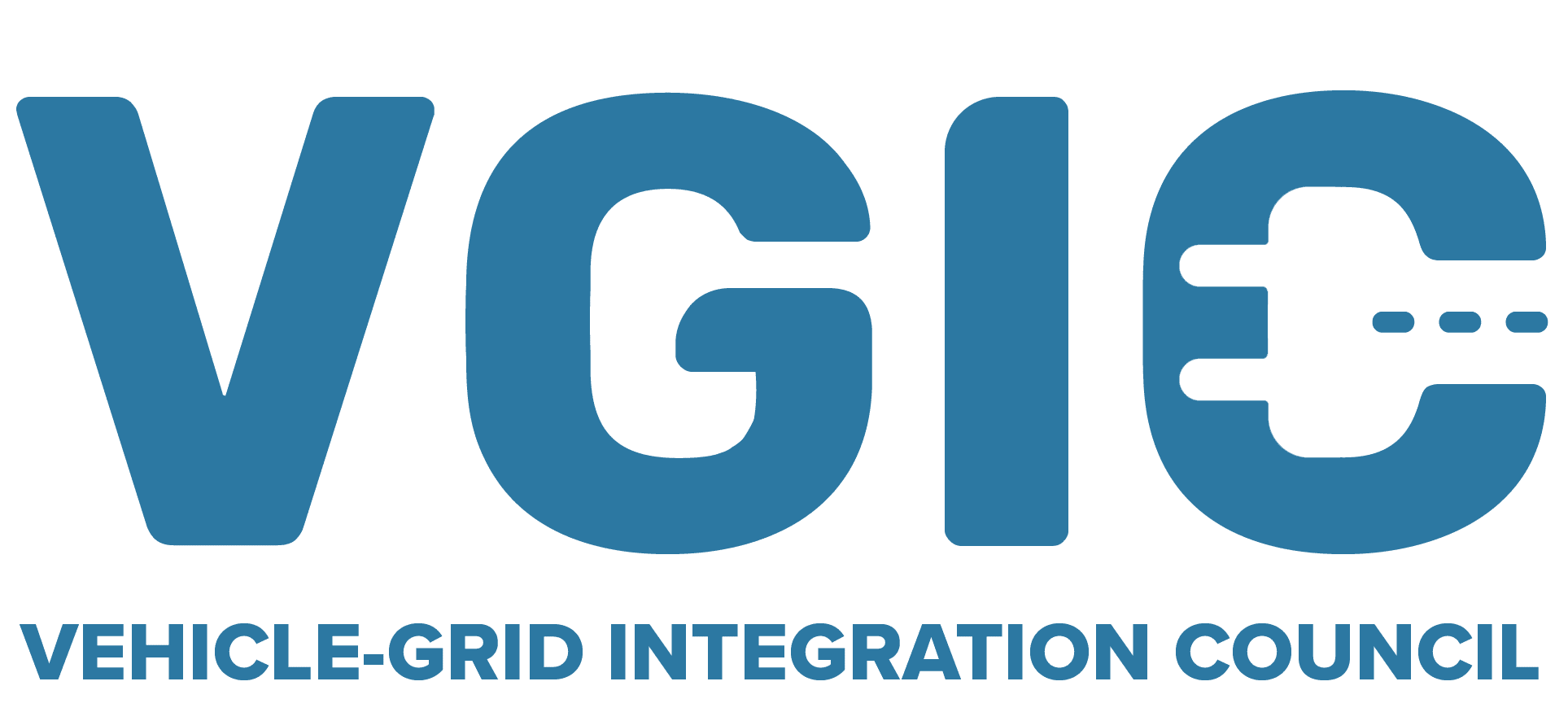The vehicle electrification train has left the station, or in this case, the garage. California alone has set a goal to reach 1.5 million electric vehicles by 2025 and 5 million by 2030 – and 12 additional states are following that lead with similar ambitions. Electric vehicle (EV) adoption, from light-duty passenger cars to heavy-duty trucks, can be a major benefit to owners and fleets by reducing vehicle fueling costs, creating new revenue streams by providing services to the electric grid, and offering critical energy resiliency in a world of increasing climate-related natural disasters.
These optional benefits can be realized through a suite of technologies and services known as vehicle-grid integration, or VGI. As fleet owners electrify their vehicles, it will be essential to consider which VGI options may be a good fit and could enhance the overall value proposition of EVs. While many of these benefits are inaccessible today due to regulatory and interconnection barriers, they may soon become available through advocacy and action.
Energy Storage on Wheels
Simply put, an EV is a car body strapped to a large battery – or energy storage on wheels. There are nearly 2 million EVs currently deployed on U.S. roads, and those numbers are expected to increase rapidly in the coming years. When not busy conveying people and goods, millions of scattered EV batteries on wheels can provide valued services to America’s most complex and relied-upon machine: the electric grid.
VGI encompasses the suite of ways EVs can provide services to the grid and be compensated for those services.
In aggregate, these millions of “distributed energy resources” can provide grid management services that grid operators and electric utilities will pay for, such as helping to smooth out energy demand, providing power to the grid, and regulating voltage and frequency. Studies have shown that the value of the grid services EVs can provide range from $1.6 billion to more than $15 billion by 2025 in California alone, and this value can scale quickly depending on the services they can provide.
Benefits for EV Fleets
VGI encompasses the suite of ways EVs can provide services to the grid and be compensated for those services. For an EV fleet operator, unmanaged charging can lead to significant costs, eroding many of the financial and sustainability benefits of EV adoption. However, intelligent and managed charging and discharging represents a massive opportunity to save on fuel costs, and even capture new revenue streams.
Saving Money with Managed Charging
Managed charging, often referred to as V1G, is as simple as it sounds – strategically managing when you charge an electric vehicle. In some states, the price of electricity fluctuates throughout the day, making charging more or less expensive depending on the hour. By synchronizing the charging of your fleet or vehicle to times of the day when electricity prices are low, managed charging enables you to save money on your power bill. This technique can also be used to reduce the size and cost of new charging equipment and related infrastructure required to serve a fleet. With the right V1G software solutions and utility incentives, EV owners and operators can achieve significant charging cost savings.
V1G is managing when an electric vehicle charges, in response to utility rates, programs, and incentives, or other grid needs.
Examples of common utility rates and programs supporting V1G:
- Time of Use Rate: A rate plan in which electricity prices vary predictably according to the time of day, day of the week, or season, allowing EVs to charge when rates are low.
- Off-Peak Charging Rebates: Incentives for EV owners to charge during off-peak times.
- Demand Response Programs: Incentives to reduce EV charging during periods of high load demand or stress on the grid, such as a summer heat wave.
- Real-Time Pricing, VGI Rates, and other dynamic rate structures: Electric rates that vary dynamically hour by hour, enabling cost savings for EVs and fleet operators that charge during low-cost periods.
- Automated Load Management System (ALM): Software algorithms used to balance energy demand from multiple chargers at one location, allowing more chargers to be located at a single site and reducing the need for expensive electrical equipment upgrades.
Creating New Revenue Streams with V2G
While V1G can reduce charging costs by intelligently managing one-way charging, vehicle-to-grid, or V2G, enables EVs to make additional revenue by providing services to the grid. V1G is a unidirectional relationship between the vehicle and the grid — the grid charges the car, and the car passively receives that energy. V2G is a bidirectional relationship — not only can the car receive power from the grid, but it can also feed power back to the grid and provide other services the grid may require — and get paid for these services.

Adapted from Eric Cutter 2019 California Framework for Grid Value of Vehicle Grid Integration (VGI)
V2G is still in its early days and has faced some regulatory barriers that have limited its deployment at scale. However, that is rapidly changing as many new vehicle models are coming with built-in V2G capabilities. V2G is currently being evaluated and adopted by utilities and grid regulators in many states, including the California Public Utilities Commission. Numerous demonstration pilots have shown the efficacy of V2G technologies, and we expect there to be a rapid growth in V2G use over the coming years.
Examples of how EVs can unlock the value of V2G to create new revenue streams:
- Energy Arbitrage: Purchasing energy when electricity is inexpensive and selling it back to the grid when prices rise.
- Capacity and Demand Response: Discharging power to the grid when it is most needed.
- Ancillary Services: Responding to a wide range of utility or grid operator needs, such as frequency regulation and voltage control. These additional services could provide even more value streams to reduce total cost of EV ownership.
V2G occurs when an electric vehicle discharges energy back to the grid.
Providing Emergency Backup Power with V2B
EVs can also utilize two-way charging and discharging capabilities to send energy to a building or home. In a grid outage, the energy stored in EV batteries can serve as a generator, providing safe, emission-free emergency backup power. During the Texas grid crisis, ambitious DIY EV owners used their vehicle batteries to power their lights, coffee makers, and space heaters. Although some of these were homespun projects, backup power capability is already available in some hybrid vehicle models and may become a standard feature for many EVs and charging equipment in the near future.

Credit: Strategen Consulting
Even when the grid is functioning normally, V2B can drive value for businesses and homes when properly integrated into building design. EVs can act like stationary energy storage devices, reducing building peak demand and lowering the building’s electrical bill. A demonstration of V2B technology by Fermata Energy in Virginia saved a building nearly $800 over the course of five months, simply by offsetting a 15-minute peak period daily with one Nissan Leaf.
Unlocking VGI Benefits Requires Advocacy and Education
VGI is underway across the country with a broad range of use cases and technologies, from Vermont to Kentucky and, of course, California. However, key decisions about electric utility rates, EV programs and incentives, and rules for connecting to the grid to provide services are often dictated by state regulatory commissions and other policymakers.
Vehicle-to-Building (V2B) occurs when an electric vehicle exports energy to a building.
“Ensuring that the full suite of VGI options and benefits is available to EV fleet owners requires a dedicated industry voice to be at the table with these policymakers as EV infrastructure plans are developed,” according to Marc Monbouquette, regulatory affairs manager at Enel X North America.
Monbouquette is also board chair of the Vehicle-Grid Integration Council (VGIC), a national trade association that Enel X North America helped to spool up in 2019. The VGIC is focused on ensuring that policymakers support decisions that unlock the benefits of VGI to reduce the total cost of EV ownership and accelerate the adoption of electric vehicles.

“VGI has the potential to help fleet owners save money, reduce electricity costs across the system, and support a sustainable and affordable transportation transition. We have the technology to do it. Right now, we need to continue to educate policy makers and advocate for these technologies to be deployed,” added Monbouquette.
To learn more about VGI technologies, case studies, and policy recommendations that can help save money for fleet owners, be sure to tune into our webinar, Unlocking Value for EV Fleets with VGI, on April 21st.



